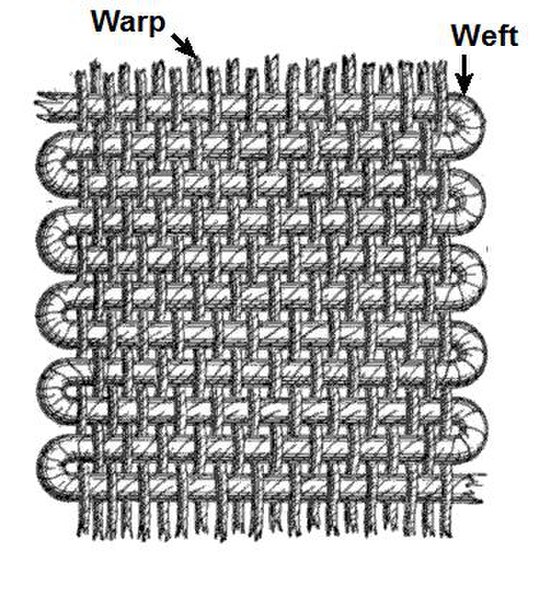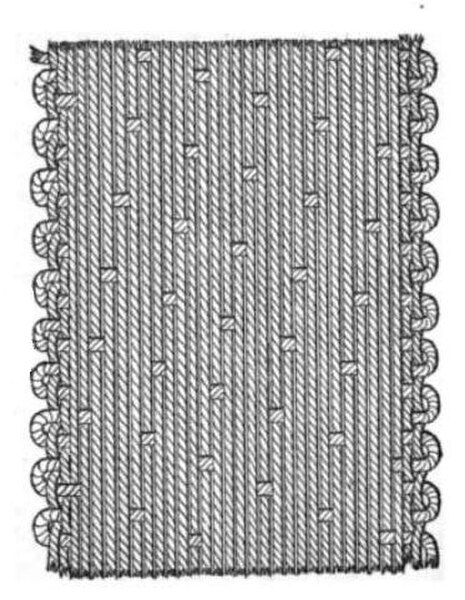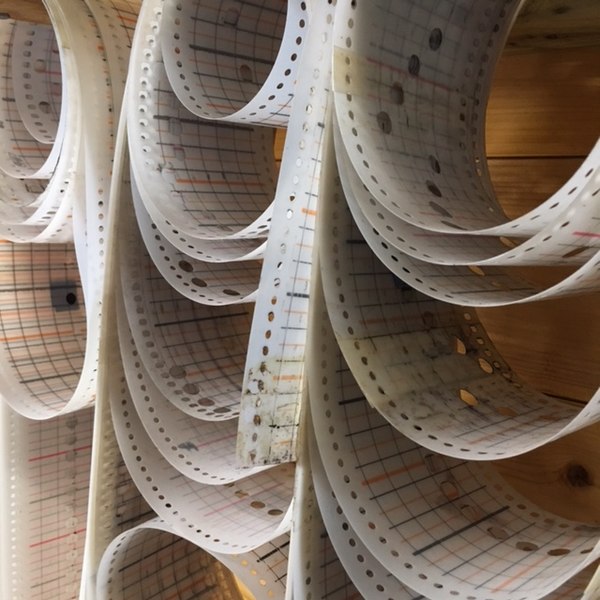Twill is a type of textile weave with a pattern of diagonal parallel ribs. It is one of three fundamental types of weave, along with plain weave and satin. It is made by passing the weft thread over one or more warp threads then under two or more warp threads and so on, with a "step," or offset, between rows to create the characteristic diagonal pattern. Because of this structure, twill generally drapes well.
A twill with ribs in both sides, called herringbone
Diamond twill, with weaving edge (left), blue warp, red weft
Twill pattern developing on a peg loom
Weaving is a method of textile production in which two distinct sets of yarns or threads are interlaced at right angles to form a fabric or cloth. Other methods are knitting, crocheting, felting, and braiding or plaiting. The longitudinal threads are called the warp and the lateral threads are the weft, woof, or filling. The method in which these threads are interwoven affects the characteristics of the cloth.
Cloth is usually woven on a loom, a device that holds the warp threads in place while filling threads are woven through them. A fabric band that meets this definition of cloth can also be made using other methods, including tablet weaving, back strap loom, or other techniques that can be done without looms.
Warp and weft in plain weaving
A satin weave, common for silk, in which each warp thread floats over 16 weft threads
A Bangladesh Ansar officer weaving on duty.
Weaving pattern cards used by Skye Weavers, Isle of Skye, Scotland







